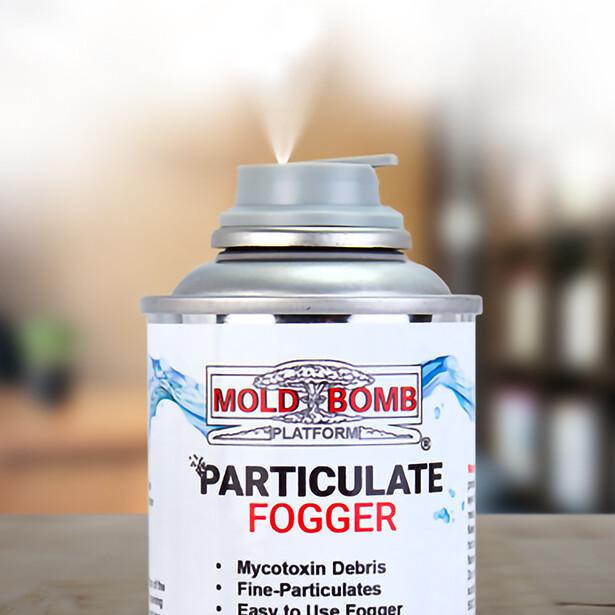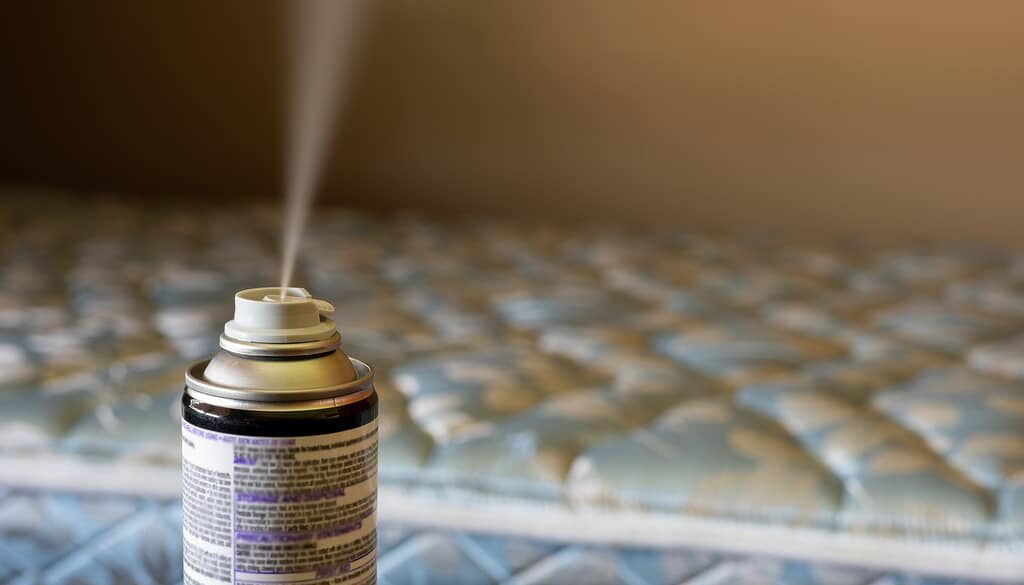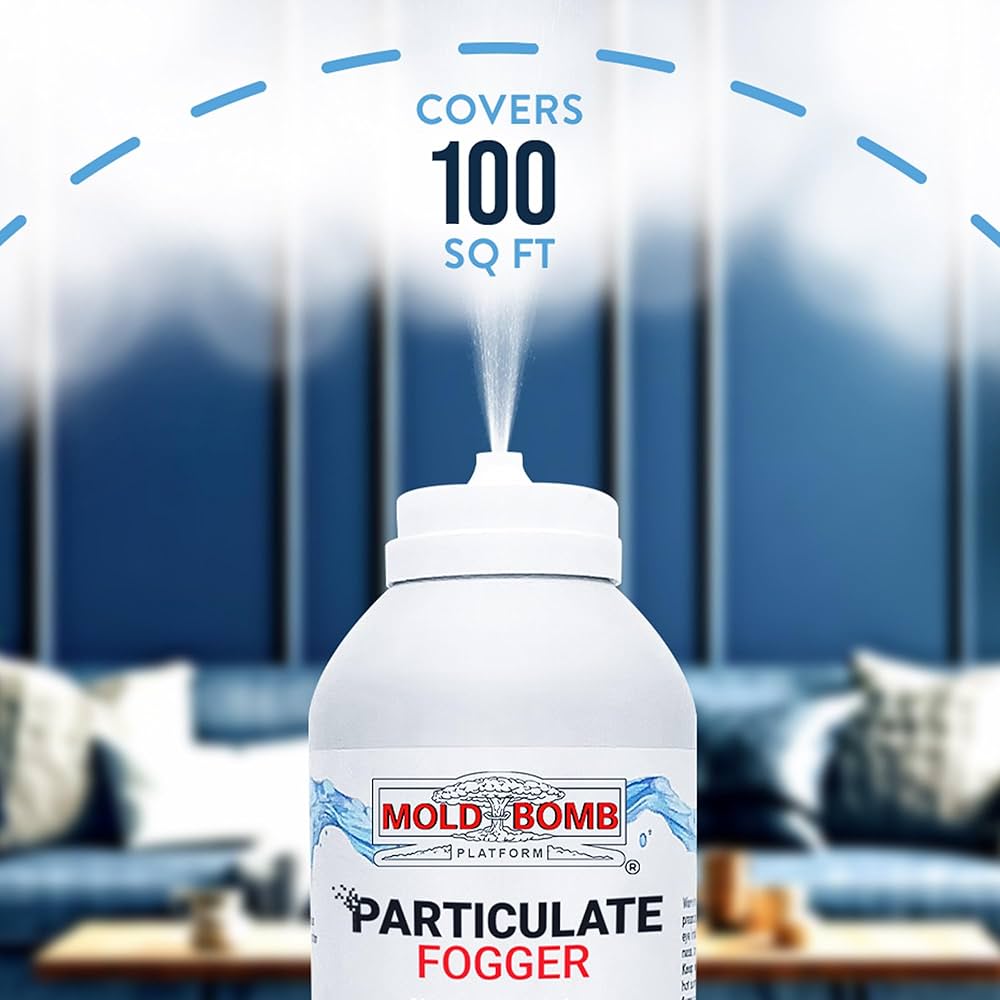If you’re dealing with a mold problem in your home, you may have come across mold bomb foggers as a potential solution. These devices promise a quick and easy way to eliminate mold spores in hard-to-reach areas, but do they really work? In this article, we’ll explore the science behind mold bomb foggers, how they operate, their effectiveness, and when they should (and shouldn’t) be used for mold remediation.
What Is a Mold Bomb Fogger?

A mold bomb fogger is a canister or device that releases a fine mist of antimicrobial or fungicidal chemicals into the air. These chemicals are designed to kill airborne mold spores and disinfect surfaces where mold might grow. Mold foggers are often marketed as a DIY solution for addressing mold infestations in homes, offices, and other spaces.
The “bomb” aspect refers to the way the fogger releases its contents in a single, widespread burst, ensuring the mist reaches every corner of the room.
How Do Mold Bomb Foggers Work?
The operation of mold bomb foggers is fairly simple. Here’s a step-by-step explanation of how they work:
Step 1: Preparation
- Identify the affected areas and close off the room to prevent fog from escaping.
- Remove pets, plants, and sensitive items like electronics from the space.
- Seal any food or dishes to prevent chemical contamination.
Step 2: Activation
Once the room is prepared, the fogger is activated by pressing or pulling a trigger. This releases a cloud of fungicidal mist into the air, which begins to settle on surfaces throughout the room.
Step 3: Settling and Disinfection
- The fine mist settles onto walls, ceilings, floors, and other surfaces, where it works to kill mold spores and prevent regrowth.
- Airborne mold spores are neutralized as the chemicals disperse through the space.
Step 4: Ventilation
After the fogger has done its job, the room must be ventilated to remove any lingering chemical fumes. This usually involves opening windows and running fans for several hours.
How Effective Are Mold Bomb Foggers?

Mold bomb foggers can be effective for killing airborne mold spores and treating surfaces in hard-to-reach areas. However, they are not a one-size-fits-all solution. Here are some important points to consider:
When Mold Bomb Foggers Work Well
- To address airborne mold spores after remediation.
- For treating hard-to-reach surfaces in attics, crawlspaces, and HVAC systems.
- As a temporary measure to reduce mold spore counts in the air.
Limitations of Mold Bomb Foggers

- They cannot remove visible mold growth on porous surfaces like drywall, wood, or carpets.
- They do not address the root cause of mold, such as moisture or leaks.
- Foggers may leave a residue on surfaces that require cleaning afterward.
Table: Pros and Cons of Mold Bomb Foggers
| Pros | Cons |
|---|---|
| Quick and easy to use | Does not remove mold colonies |
| Reaches hard-to-access areas | Leaves chemical residue |
| Neutralizes airborne spores | Requires room preparation and ventilation |
| Affordable compared to professional services | Not effective on porous surfaces |
When to Use a Mold Bomb Fogger
Mold bomb foggers are best used as part of a larger mold remediation plan. Here’s when they can be helpful:
- After removing visible mold growth to address lingering spores.
- In spaces where manual cleaning is difficult, like air ducts or crawlspaces.
- As a temporary solution while waiting for professional remediation services.
Important: Mold foggers should never be used as the sole solution for mold problems. They must be combined with proper cleaning and moisture control to ensure long-term results.
Safety Tips for Using Mold Bomb Foggers

Using mold foggers involves handling potentially harmful chemicals. Follow these safety tips to protect yourself and your home:
- Wear protective gear, including gloves, goggles, and a mask.
- Follow the manufacturer’s instructions carefully to avoid overexposure.
- Ventilate the area thoroughly after use to remove fumes.
- Keep children and pets out of the treated area until it’s safe to re-enter.
FAQs About Mold Bomb Foggers
| Question | Answer |
|---|---|
| Do mold bomb foggers kill all types of mold? | They can neutralize most airborne mold spores but may not fully eliminate tough colonies like black mold. |
| Are mold bomb foggers safe to use? | Yes, when used as directed, but always wear protective gear and ventilate the area afterward. |
| Can foggers replace professional mold remediation? | No, they are a supplementary tool and not a replacement for comprehensive mold removal services. |
| How often should I use a mold bomb fogger? | Only as needed, such as after remediation or during mold spore outbreaks. |
| Do foggers leave a chemical residue? | Yes, some foggers leave a residue that may require cleaning. |
Conclusion: Are Mold Bomb Foggers the Right Solution for You?
Mold bomb foggers can be a valuable tool in the fight against mold, but they are not a standalone solution. Their primary function is to reduce airborne mold spores and treat hard-to-reach areas, making them a useful supplement to thorough mold remediation efforts. For significant mold problems, professional services are essential to address the root cause and prevent recurrence.
If you’re dealing with mold in your home, contact Citywide Mold Mitigation. Our team of experts provides comprehensive mold removal and prevention services to keep your home safe and healthy.

